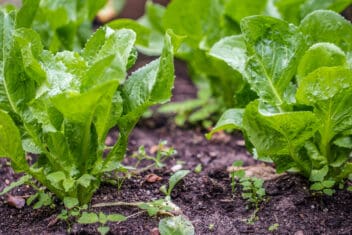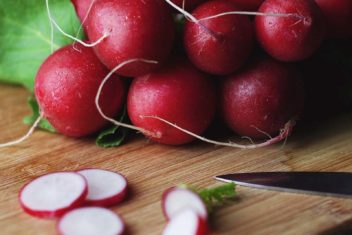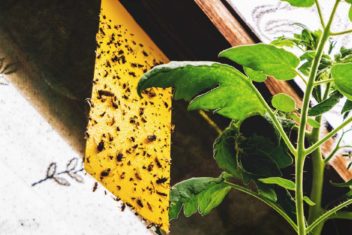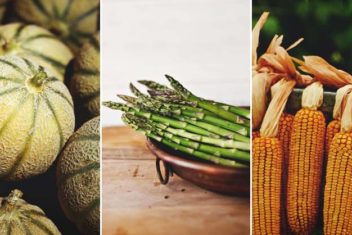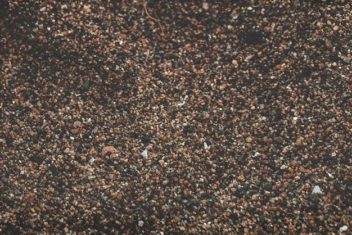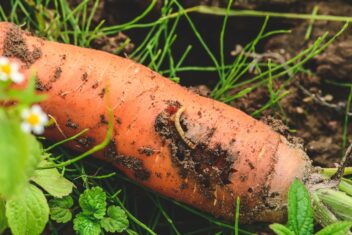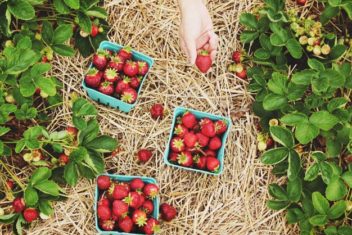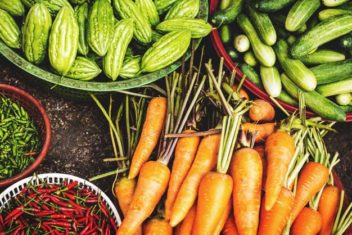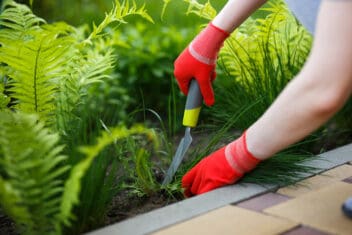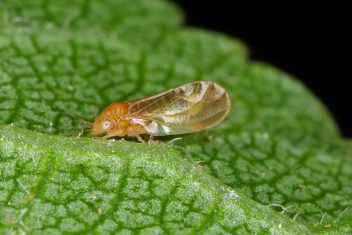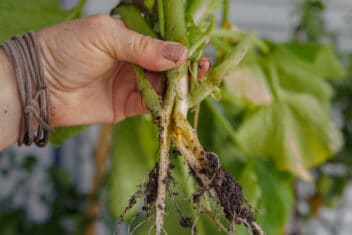Artichokes are one of those plants that gardeners can become obsessed with. They’re a delicacy. People wait eagerly for the flowers to ripen so they can pull out their favorite recipes and dive in.
The earthy, rich flavors draw artichoke lovers to grow this unusual plant, but many people don’t realize it can be quite fussy. Beyond pests and diseases, they require the right environmental conditions to produce.
Let’s talk through 11 artichoke growing problems you may encounter so that you can enjoy those marvelous artichoke flowers.
1. Plant Lacks Vigor With Distorted Leaves
Artichoke curly dwarf virus (ACDV) is a serious issue. It causes the plant to lose growth and vigor. The leaves curl, and bud formation is severely reduced. Necrotic spots often appear on the leaves that are dark and dry. Eventually, they crumble or drop prematurely.
Not a lot is known about this viral infection, but insects spread it, with stressed or damaged plants being particularly susceptible.
Remove and destroy any infected plants as soon as symptoms appear. Control insect populations with netting or preventative applications of insecticides. Control weeds around the artichokes as some plants like milk thistle may be infected and help to spread the virus.
Artichoke curly dwarf virus may be more one of the more common artichoke growing problems in the home garden due to spray programs in commercial gardens.
2. Holes in Leaves, Stems, and Outer Bracts
When these symptoms are present, the artichoke plume moth (Platyptilia carduidactyla) might be feeding on your plant. They’re a particular problem if you grow artichokes as perennials in warmer areas.
The artichoke plume moth feeds on all parts of the plant and causes serious issues, especially when they eat the outer bracts (the edible petal-like structures).
The larvae are a half-inch long and green or yellow. The adults are brown with small wings.
To avoid the artichoke plume moth, cut the plants back to ground level once a year after harvest. Make sure you remove all the foliage and plant material. Cover the trimmed plant with at least eight inches of fresh soil.
Consider using Bacillus thuringiensis as a preventative measure. It can be purchased at most garden centers. Follow the instructions on the package.
3. Rotting Crowns With a Foul Smell
Crown rot is a serious bacterial disease that appears when there is excessive rain or watering. This soil-borne bacteria (Erwinia chrysanthemi) attacks the plant and is a problem in heavy soils that don’t drain well.
The plant will begin to wilt and struggle. Rotting occurs in the root system or trunk at the soil line. Often, the foliage will turn yellow and thin out due to a lack of nutrients. Due to the type of stem artichokes have, they can be susceptible to crown rot.
Ensure the soil drains well, and don’t over-water the artichoke. Make sure any mulch you’ve used isn’t causing water to sit. Don’t allow the mulch to touch the plant.
Keep the garden free of weeds.
Once root or crown rot sets in, consider removing the plant and disposing of it in the garbage. Don’t replant the area until the drainage is sorted.
4. Slimy Crown With Fuzzy Gray Mold
Sometimes called gray mold or bud rot, this fungal pathogen usually enters plants damaged by gardening tools or insects. Infected areas go brown and soft. Gray mold is usually present at the infected site and is readily noticeable.
Ensure you plant the artichoke in free-draining and fertile soil. Don’t over-crowd the garden and ensure plenty of airflow between the plants.
Water the base of the plant, not the foliage. Prevention is key, rather than the cure.
5. Tough and Leathery Bracts
This is a timing issue and possibly too much sun. Although artichokes like some sun, if you live in an area with periods of sweltering sunshine, provide some afternoon shade. Excessive heat and sun can cause the artichoke head to open too quickly. This dries out the tissue, leaving it dehydrated and tough.
Make sure you harvest the artichoke bud or head when they are closed and tight, or just starting to open.
6. Yellow Leaves, Stunted Growth, and Stems Unable to Support the Weight of the Buds

This is likely the artichoke aphid (Capitophorous elaeagni). The leaves begin to turn yellow and curl up at the sides. The plant becomes stunted and struggles to grow. The stalks are too thin to hold the weight of the buds, so they start to droop.
The last telling symptom is sooty mold that grows on the stalks and foliage due to the honeydew deposits left by the artichoke aphid. You may see ants or wasps enjoying the honeydew.
The number of insects often depends on the weather. When humidity is high, artichoke aphid numbers increase.
Look on the undersides of leaves for the insect. They are pale green to light yellow in color.
Use insecticidal soap. If you want a purely natural remedy, use neem oil, which disrupts their life cycle and makes the plant unpalatable to them. You can also blast the aphids off with water.
7. Lots of Small Holes in the Leaves
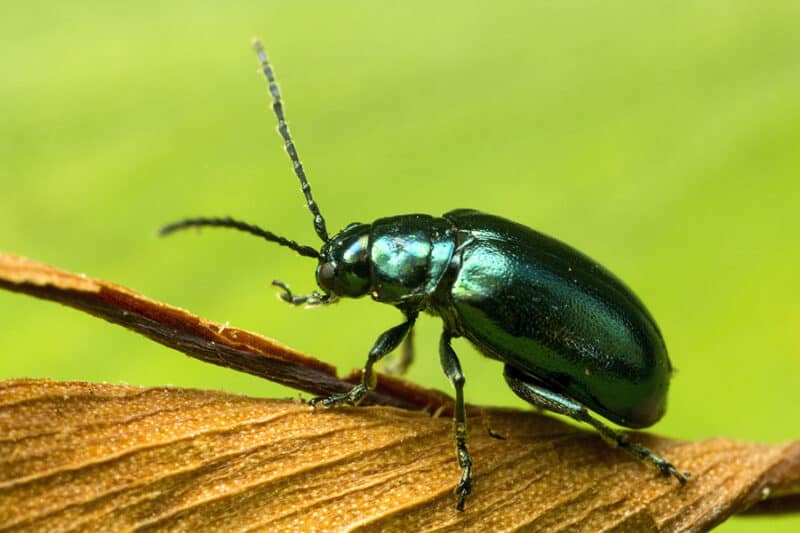
Lots of small holes in the leaves in a “shothole” pattern are from the flea beetle. Young plants are more susceptible than older ones due to the tender foliage.
If the number of flea beetles is high, the plant will lose vigor or die in the worst-case scenario.
The beetle is tiny, and it jumps when you disturb it.
Use diatomaceous earth to prevent the movement of the beetle in the soil. Use neem oil on the plant. Consider floating row covers and mulching around the plant.
8. Stunted Buds and Weak Stems
Just as too much water causes issues, sustained lack of moisture also causes issues.
Prolonged drought causes stunted buds and stems that are thin and weak. Of course, too long without water and the artichoke will die.
If you save a seriously stunted plant, it will always struggle a little, so ensure the water levels are correct from the start. Artichokes are thirsty plants and the soil shouldn’t be allowed to dry out completely at any point.
Try to keep it moist but not wet.
9. Seedlings Wilt and Die
Artichoke seedlings are susceptible to damping off. This is when the young seedlings collapse, quite often covered in fungal growth like white mold.
Damping off occurs in high humidity when seedlings are planted too closely together so the soil-borne fungi attack the seedling. This could also occur simply because the fungi are present in the soil.
Just when you think the seedlings are strong, they collapse, sometimes with a soggy, water-soaked lesion at the base.
This is one of those situations where prevention is key:
- Use good quality seed-raising mix and compost.
- Don’t overwater the plant or allow the soil to become sodden.
- Plant seedlings in a manner that allows for good airflow.
- Use clean water to provide the plants.
10. Leaves Yellowing and Dropping with Poor Bud Development
Poor bud development is often a sign of the artichoke not getting enough chilling hours over the last winter. Of course, this only applies if you’re growing them as a perennial.
Unfortunately, mild winters with regular temps above 20ºF cause the artichoke to struggle in the next growing season.
The dropping leaves could indicate a stressed plant, so make sure you aren’t overwatering it.
If you have a mild winter, make sure next growing season, you provide the artichoke with just enough water and nutrients and that the conditions around soil, spacing, and nutrients are just right.
If mild winters continue, talk to your local gardening center about different varieties for you to grow or grow them as perennials.
11. Jagged Holes and Edges in Leaves and Stems
Like most plants, slugs and snails love artichoke leaves and stems. The younger plants are their favorites.
Pick them off at night and give them to your chickens in the morning if you have any.
Use slug and snail pellets or beer traps to get rid of them. Use diatomaceous earth around the plants.
Other pests that might chew holes in the leaves include:
12. Small Buds

Plants in too much shade either won’t develop buds, or they will develop smaller or only a few buds. Artichokes do best in full sun, with at least eight hours of direct light daily. If they get less than that, the chances increase that the buds will be stunted.
Underwatering can also cause small or absent buds. The difference between buds that don’t have enough light is that any buds that develop with be darkened.
Many cultivars won’t bud until their second year, so if you plant to grow them as an annual, make sure to choose a cultivar that will bloom in the first year.
If you can resolve any of the previous causes, you can cut the existing stalks back to encourage a second flush. Prune nearby plants to provide more sun, or increase your watering schedule, especially in the heat.
13. No Buds

If no buds are forming, it could be that you planted too late in the year. Remember, these plants need a deep chill to develop buds. If you plant after the last frost, they might not develop any buds.
Artichokes also need plenty of food. If they don’t receive regular feeding during the growing season, they might not develop buds.
Use a vegetable-specific fertilizer every four weeks during the growing season.
5 Tips For the Best Artichoke Plants

- Allow for spread. Don’t be tricked into thinking artichokes are small plants based on the size of the seedling. They grow tall and wide, so give them six to eight feet between plants. This will give them room to grow and will provide airflow to keep them healthy. Most artichokes grow up to four feet tall and three feet wide.
- Provide plenty of moisture. Make sure the artichoke doesn’t suffer drought conditions. Make sure that the soil is free draining and doesn’t hold moisture too much or get bogged down. Water deeply once a week, and don’t water the foliage.
- Use regular sprays of neem oil to keep pests at bay. Use organic pyrethrum as a knockdown if you need to.
- Aim for a soil pH of 6.5 to 7. Make it deep, fertile, and well-draining.
- Choose the right variety for your area and conditions. ‘Imperial Star’ is suitable as an annual in USDA Growing Zone 6 and lower. ‘Green Globe’ is perfect for California but can be fussy. Talk to your local garden center.
- Decide whether you can grow artichokes as annuals or perennials. Some places just aren’t suited to growing them as perennials.

